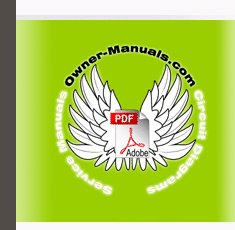|
|
|
Categories
|
|
Information
|
|
Featured Product
|
|
|
 |
|
|
There are currently no product reviews.
 ;
I'm so glad I was able to find a site to download my missing manuals. Very reasonable prices and they kept me informed about the process and I had my manual within less than a day. The only thing I wish was an option is a 100% English version with no spanish or anything. But overall great site.
 ;
The manual is complete with excellent quality! One suggestion, show number of pages and weather it is multi-lingual. The AD 600 Manuel is about 76 pages and over half is non English. This results in a larger print job than usually needed. Having this information, one could select the desired pages for printing.
 ;
I've been looking for a copy of the original user/owner manual. Just what the doctor ordered, thank you.
 ;
the manual was very helpful thank you very much no one else was able to help me thanx
 ;
This is an excellent handbook. We had no information on the appliance until we obtained this and are now able to use the appliance to its full potential. Strongly recommended.
Receiving Broadcasts
Notes
Before receiving broadcasts, make sure you have connected FM and AM antennas to the receiver (see page 7).
Storing FM stations automatically (AUTOBETICAL)
(Models of area code CEL only)
� Do not press any button on the receiver or supplied remote during autobetical operation. � If you move to another area, repeat this procedure to store stations in your new area. � For details on tuning the stored stations, see page 40. � The FM MODE setting is also stored along with the station. � If you move the antenna after storing stations with this procedure, the stored settings may no longer be valid. If this happens, repeat this procedure to store the stations again.
This function lets you store up to 30 FM and FM RDS stations in alphabetical order without redundancy. Additionally, it only stores the stations with the clearest signals. If you want to store FM or AM stations one by one, see �Presetting radio stations� on page 40.
Direct tuning
You can enter a frequency of the station you want directly by using the numeric buttons on the supplied remote. For details on the buttons used in this section, see the operating instructions for the supplied remote.
1 Press ?/1 to turn off the receiver. 2 Hold down MEMORY and press ?/1 to
turn the receiver back on.
1 Rotate FUNCTION to select TUNER.
The last received station is tuned in.
�Autobetical select� appears in the display and the receiver scans and stores all the FM and FM RDS stations in the broadcast area. For RDS stations, the tuner first checks for stations broadcasting the same program, then stores only the one with the clearest signal. The selected RDS stations are sorted alphabetically by their Program Service name, then assigned a 2-character preset code. For more details on RDS, see page 41. Regular FM stations are assigned 2-character preset codes and stored after the RDS station. When done, �Autobetical finish� appears in the display momentarily and the receiver returns to the normal operation.
2 Press FM/AM to select the FM or AM
band.
3 Press D. TUNING. 4 Press the numeric buttons to enter the
frequency.
Example 1: FM 102.50 MHz
1
b
0
b
2
b
5
b
0
Example 2: AM 1350 kHz
(You don�t have to enter the last �0� when the tuning scale is set to 10 kHz.)
1 b3b5b0
If you cannot tune in a station and the entered numbers flash
Make sure you�ve entered the right frequency. If not, repeat steps 3 and 4. If the entered numbers still flash, the frequency is not used in your area.
38
|
|
 |
> |
|
